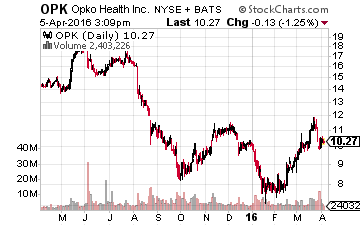Even with the market rallying back to positive for the year, insiders in these three stocks have kept buying shares at a rapid pace. These strong votes of confidence by upper management are encouraging to investors looking for value in this market.
The market has rocketed up since hitting its yearly lows on February 11th. After posting deep losses in the first six weeks of 2016, equities have been on fire. Stocks have not only recaptured all of their lost ground from January and early February but are now up slightly for the year.
However, I am not sanguine that the rally can continue. Given anemic world demand and overflowing oil storage facilities, it is hard to see crude continuing its recent rise. This has been a key component to the stock market rally and also to the improvement in the high-yield credit markets. In addition, the S&P 500 is still in a “profit recession” with first quarter earnings reports very likely to show the fourth quarter in a row that earnings within the 500 companies in the S&P declining year-over-year. Throw in a possible “Brexit” and what is shaping up as what could be the nastiest presidential campaign in my lifetime and it is hard to be that optimistic on the markets as we begin the second quarter.
However, there are still some relative bargains among equities. I am particularly interested in stocks that insiders are still buying despite the recent rally in the market. Here are a few in the biotech and healthcare arenas I am keeping my eye on and that look attractive here.

Opko Health (NYSE:OPK) continues to see frequent and consistent buys from noted billionaire and biotech innovator/investor Dr. Phillip Frost. The stock was in the in the news last week. In fact, the shares fell nearly 10% early in the week when Opko announced it had received a Complete Response Letter (‘CRL’) from the FDA regarding its New Drug Application (‘NDA’) seeking approval of RAYALDEE (calcifediol) for the treatment of secondary hyperparathyroidism in patients with stage 3 or 4 chronic kidney disease and vitamin D insufficiency.













Leave A Comment